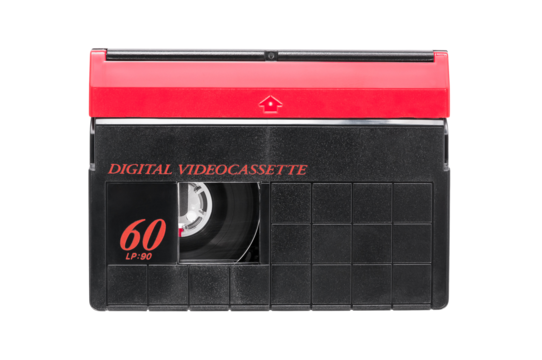The History of MiniDV Tapes: Revolutionizing Digital Video Recording
What Is a MiniDV Tape?
MiniDV (short for Mini Digital Video) is a digital video cassette format introduced in the mid-1990s that quickly became the industry standard for both consumer and professional camcorder recording. Known for its compact size and high-quality digital output, MiniDV played a crucial role in the shift from analog to digital video production.
The Birth of MiniDV: A Digital Leap Forward
When Was MiniDV Invented?
MiniDV was introduced in 1995 through a collaboration of leading electronics companies including Sony, Panasonic, JVC, Sharp, and Philips. It was designed to provide affordable, high-quality digital video recording in a small, portable format.
MiniDV Tape Specifications:
Tape Width: 6.35 mm (¼ inch)
Recording Time: Typically 60–90 minutes per tape
Video Resolution: 720 x 480 (NTSC) / 720 x 576 (PAL)
Compression Format: DV (Digital Video)
Audio: 16-bit stereo PCM or 12-bit with multiple tracks
Why MiniDV Changed Everything
Before MiniDV, video recording relied heavily on analog formats like VHS, Hi8, and S-VHS. MiniDV brought major advancements:
Digital clarity far superior to analog tape formats
Compact cassettes perfect for smaller camcorders
Frame-accurate editing, ideal for non-linear editing software like Adobe Premiere and Final Cut Pro
Reliable storage with less generation loss during copying
MiniDV vs. Other Formats
MiniDV quickly became the preferred format for:
Independent filmmakers
News reporters
Documentary producers
Enthusiastic home video creators
The MiniDV Camcorder Boom (Late 1990s – Mid 2000s)
MiniDV camcorders surged in popularity for offering:
High-quality digital recording in a compact size
Easy connectivity via FireWire (IEEE 1394) for direct video transfer to computers
Compatibility with consumer editing software
Major brands like Sony, Canon, Panasonic, and JVC released dozens of MiniDV models that became staples in homes, schools, and studios.
The Decline of MiniDV Tapes
What Replaced MiniDV?
By the late 2000s, MiniDV began to fade due to:
Tapeless recording using SD cards and internal hard drives
HD formats like AVCHD, Blu-ray, and Full HD camcorders
The rise of DSLRs, mirrorless cameras, and smartphones with HD/4K video capabilities
Despite its decline, MiniDV remained in use for years thanks to its affordability, durability, and legacy in digital video editing.
MiniDV Today: Legacy, Conversion & Archiving
Although MiniDV is no longer a mainstream format, it’s still relevant:
Video preservation: Families and filmmakers are converting old MiniDV tapes to digital formats (MP4, MOV, etc.)
Archival work: Many independent films and projects from the 1990s–2000s were shot on MiniDV
Collectors and archivists seek MiniDV equipment for playback and digitization.
The Legacy of MiniDV in Video History
The history of MiniDV tapes is more than just a technical chapter — it marked a turning point in how we recorded, edited, and shared video content. Its affordability and accessibility empowered a generation of creators and paved the way for the digital video revolution we enjoy today.
